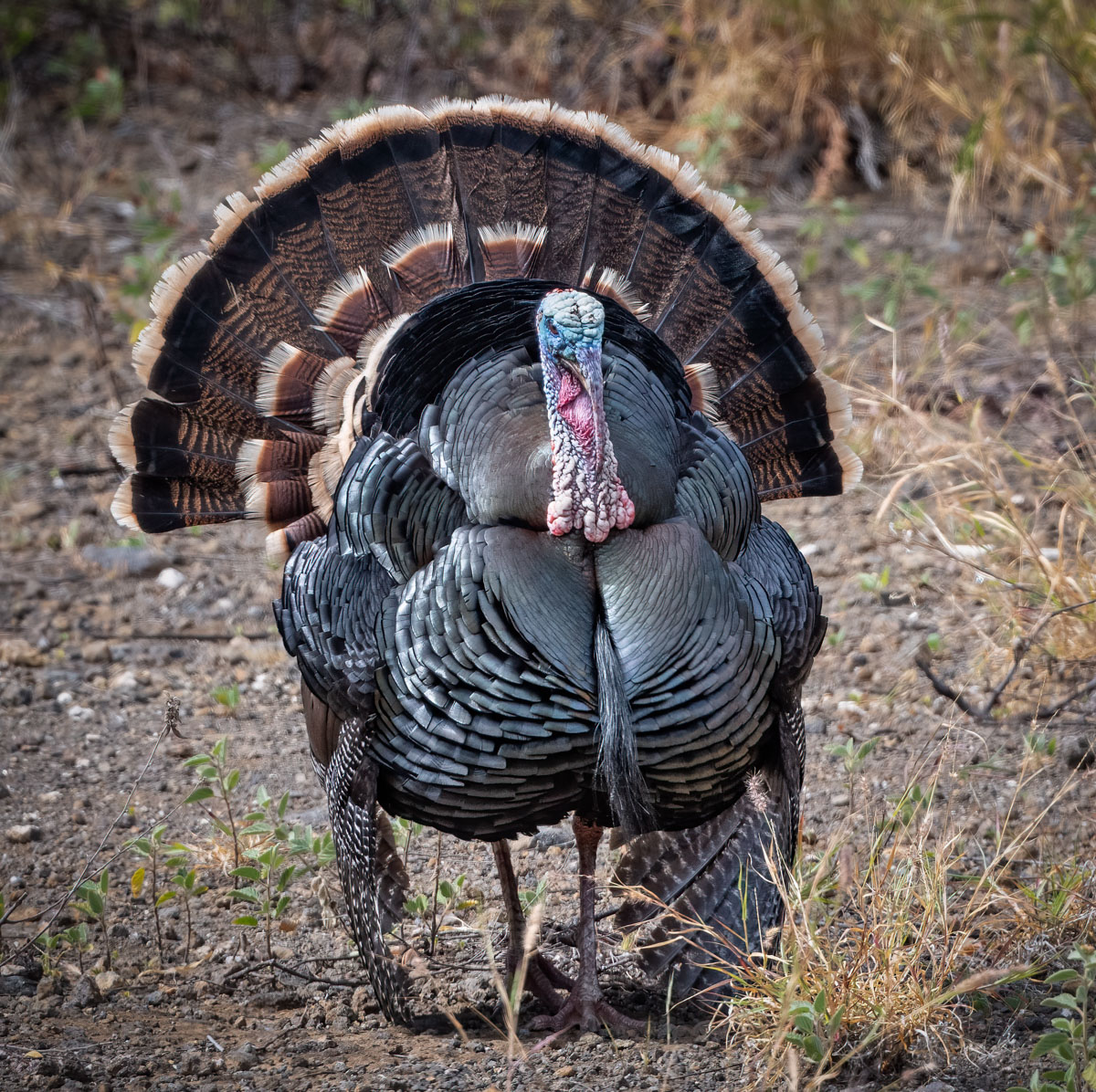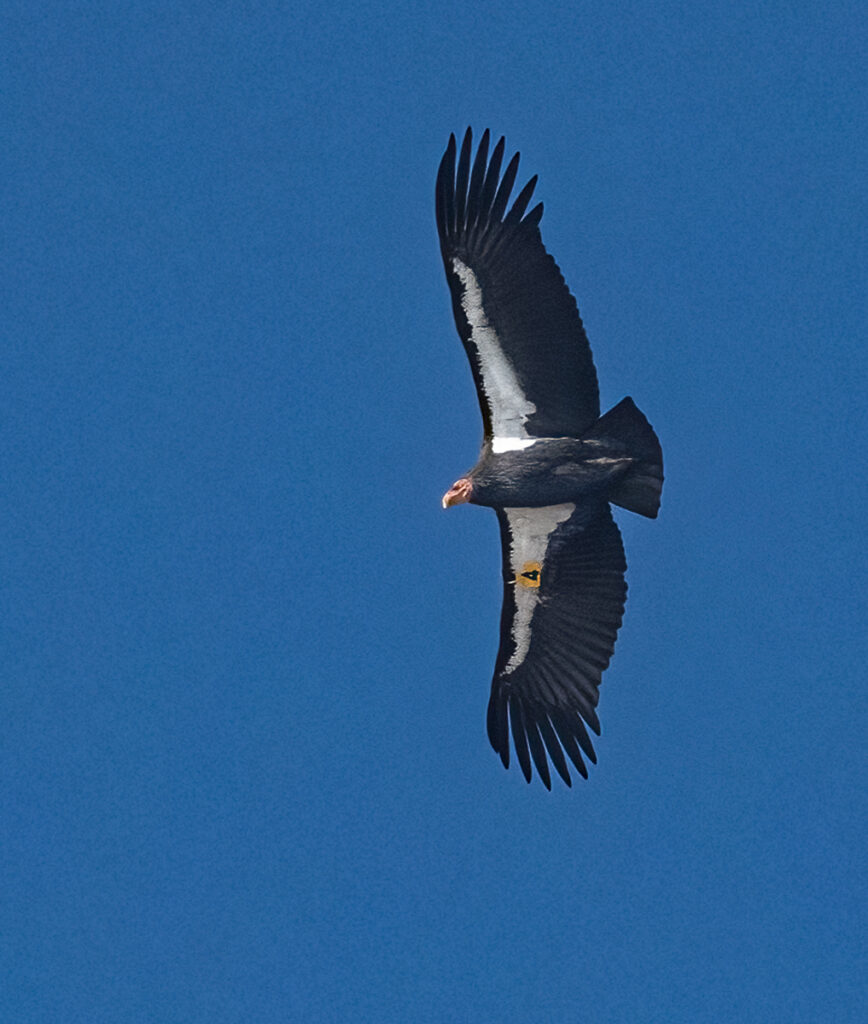
The celebrated holiday of Thanksgiving is a time to get together with family and friends, enjoy a feast, and reflect on our how bountiful our lives are, all in the spirit of gratitude. This year let’s extend that gratitude towards the birds who live alongside us. In today’s blog, we look at just three iconic species in peril and give thanks to the fine organizations who strive to conserve them and consider what we can all do to help.

WILD TURKEY
Thanksgiving tradition has long-held the American wild turkey as the bird we most associate with, due to its special place in the nation’s cultural and ecological landscape. It is this very history and significance that makes understanding the conservation of these birds vital. Prior to colonization by European settlers, wild turkeys could be found in abundance throughout forested areas in many states, and they were a staple food for Native Americans whose sustainable hunting practices ensured populations remained stable. With the arrival of the settlers, vast swathes of forests were cleared for farming land, and unchecked hunting sealed their fate; turkey numbers plummeted, with some sources claiming a 90% loss in the United States in just a few decades. Aided partly by thousands of farms abandoned during the Great Depression, pockets of concerted conservation efforts in the mid-20th century have led to a remarkable recovery, and the creation of a dedicated conservation organization called the National Wild Turkey Federation in the 1970s means that, thanks to these people and many others, today, wild turkey populations are much healthier. However, the modern turkey industry which produces domesticated birds for Thanksgiving feasts does raise concerns. Breeding for rapid growth and large breasts leads to various health issues and unsustainable, intensive farming with crowded conditions, unregulated drugs use, and genetic manipulation, all of which are harmful to the welfare of the birds, the environment, and therefore us. Aside from not actually eating them at all, one way you can help this situation is by supporting local and small-scale, sustainable, turkey farms that emphasize humane practices, responsible land management, and reduced antibiotic use.

CALIFORNIA CONDOR
The California condor is one of the most critically endangered birds in the world – indeed, they were declared extinct in the wild in 1987. Like many species in the US, historically poor decision-making in habitat management, pesticide use and the almost total annihilation of their carrion food supply through wild-game hunting created the perfect storm for their demise. While lessons are being learned, these essential scavengers are still being harmed through lead poisoning from ingesting spent ammunition fragments in their food, and habitat destruction continues to pose significant challenges for these once-sacred birds. Conservation efforts implemented by the indefatigable Ventana Wildlife Society and the US Fish and Wildlife Service’s California Condor Recovery Program are among many vanguards helping these birds survive, via lead-reduction initiatives for hunters, ongoing monitoring and care, and education about these magnificent birds. Their continued survival relies on critical interventions, and we can all play our part by learning as much as we can about these legendary vultures.

BALD EAGLE
The bald eagle is perhaps the most iconic symbol of the United States, representing our values of freedom, strength, and resilience. Despite its revered status, this majestic bird of prey has faced significant challenges over the years, not least their tragic decline during the days of DDT usage. However, publicly promoted education and the formation of the American Eagle Foundation (AEF) in 1983 means tremendous conservation work has been tirelessly pursued ever since. But bald eagles still need our attention and care: habitat loss, pesticide use, and lead poisoning are ongoing and deeply concerning threats to bald eagles and many other species. You can help this change in several ways, either by voting for lawmakers who put conservation and green-focused policies in the spotlight, volunteering for organizations like the AEF, and learning as much as you can about these awe-inspiring birds and educating others to their plight.
This Thanksgiving, let us express our gratitude for these and thousands of other bird species who play a vital role in the world we share, by acknowledging their importance and taking any steps we can to ensure their survival is just as important as our own.


